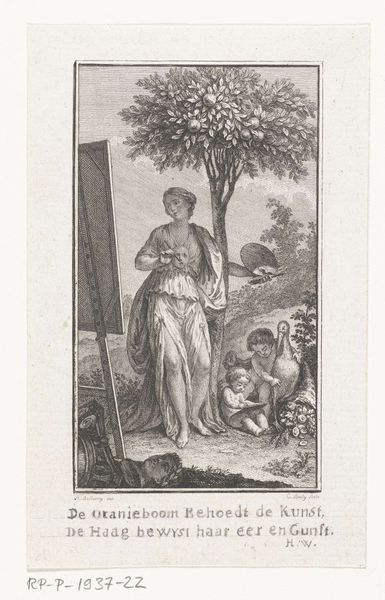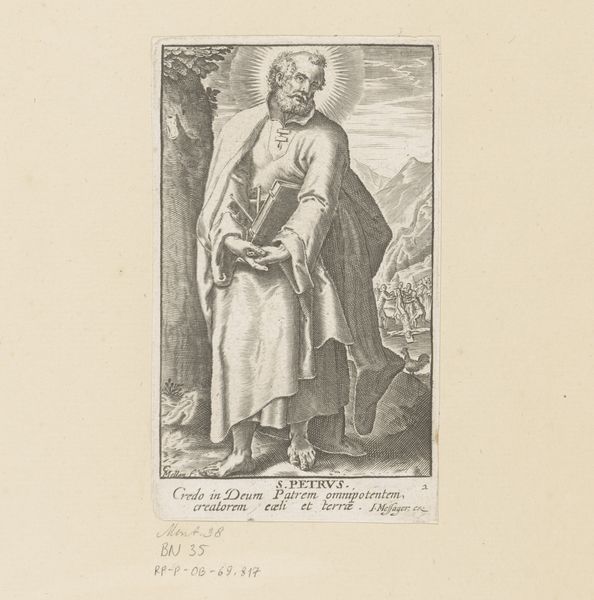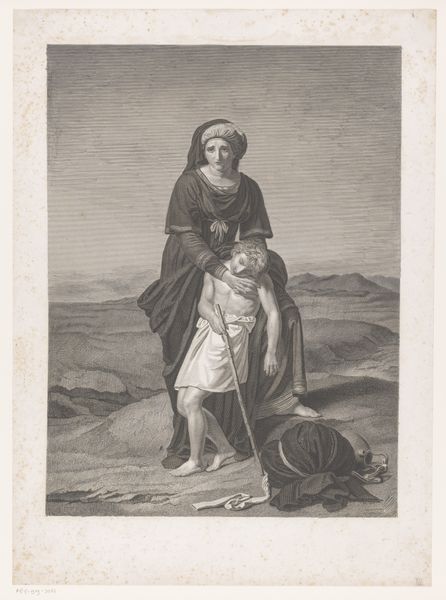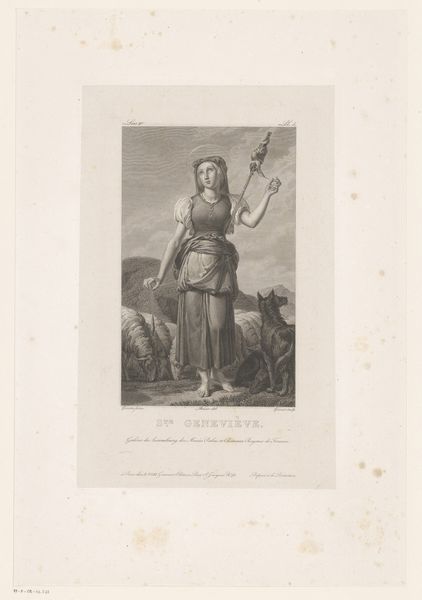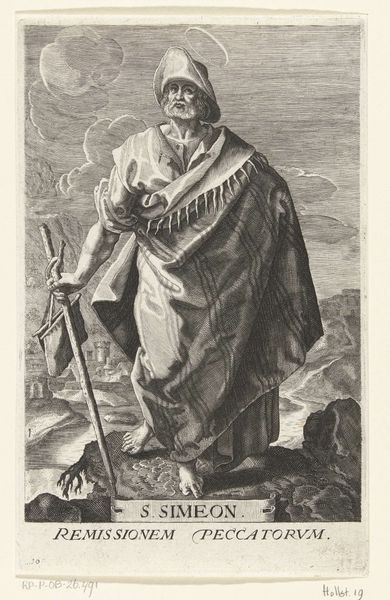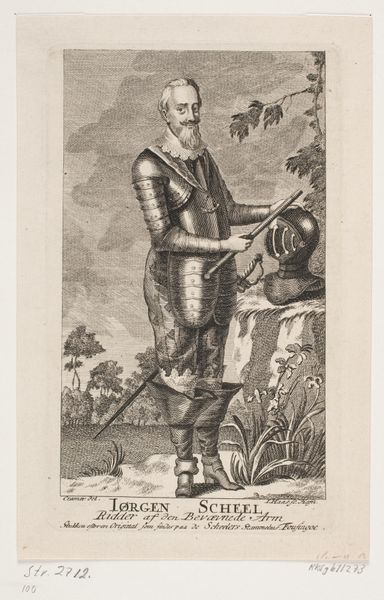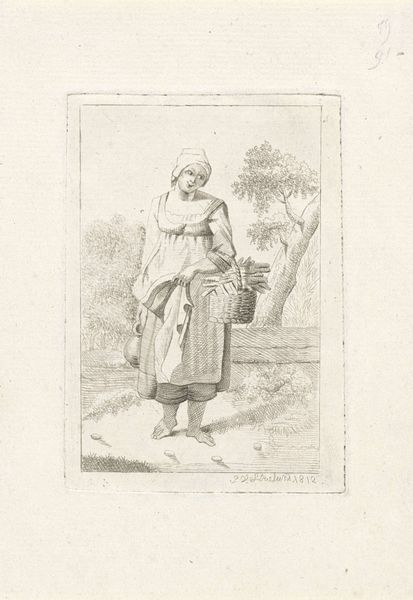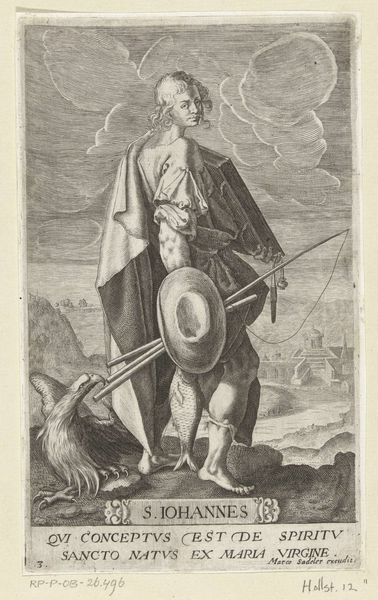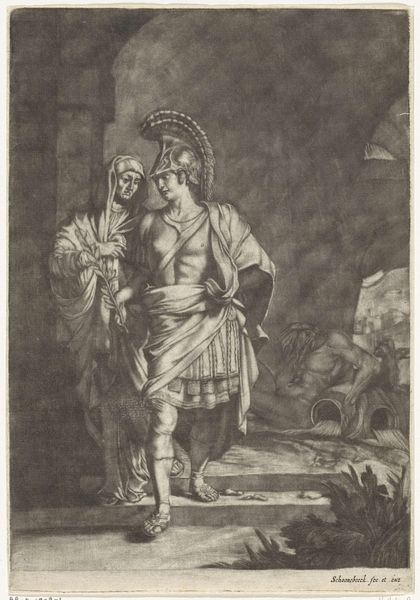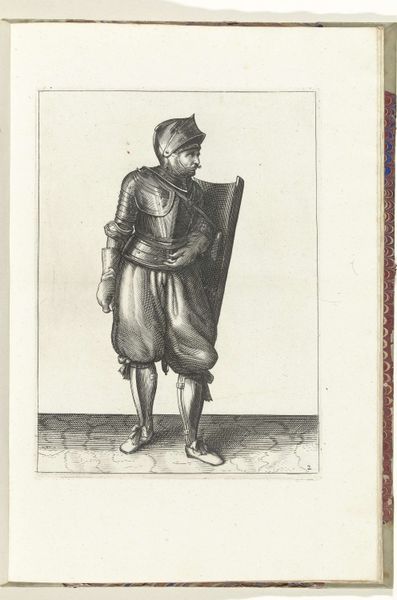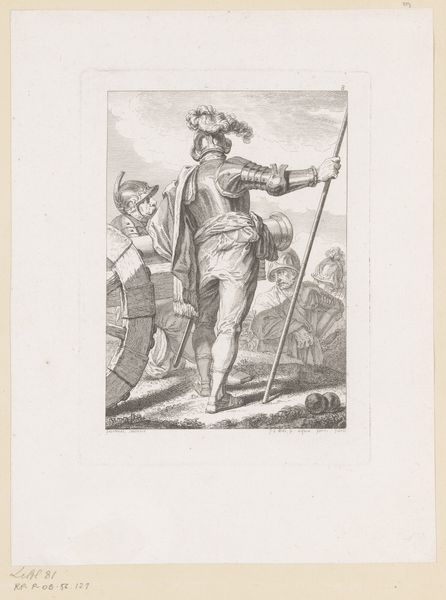
print, engraving
#
portrait
# print
#
old engraving style
#
landscape
#
figuration
#
romanticism
#
history-painting
#
academic-art
#
engraving
Dimensions: height 128 mm, width 88 mm
Copyright: Rijks Museum: Open Domain
Curator: The stoic nature and subdued tones of this piece give off a certain old world romanticism. Editor: Yes, and here in the Rijksmuseum we have Friedrich Fleischmann's 1821 engraving, "Portret van Arminius." The detail achieved through the engraving process, particularly in the figure’s garments and the surrounding landscape, really demonstrate the artist's mastery of the medium. The density of the engraved lines dictates the tone. Curator: I see that the cross-hatching in the engraving lends depth and volume to the figure, and look at his tunic and cloak, and then that prominent sword. This makes the leader, Hermann or Arminius, appear both noble, ready for war and capable in commanding an army. And those decorative knee-highs must have been an aristocratic indicator. Editor: Certainly. What’s interesting is to consider the labour that goes into producing an image like this. The engraving would have been a detailed process, a commercial enterprise even. The choice to depict Arminius reflects a growing sense of national identity at the time. It romanticises the ancient Germanic past to promote shared cultural values. It also recalls history-painting. Curator: The choice of paper, too, speaks to that enterprise; the texture and weight could inform the artwork’s reception and perceived value. Do you agree? Editor: I do. Paper was not exactly abundant, adding to the perceived importance and exclusivity. But let’s look back to the overall image. Note the landscape which gives a feeling of a cultivated paradise of sorts in that area. That might represent some symbolic place that this leader represents. I'm more curious about that tree that the Arminius figure is leaning against. The foliage creates this kind of shield around him and gives him this larger presence in the landscape. The oak leaves feel pretty deliberate and classical in that Romantic framing. Curator: I hadn't considered how the engraver utilized line and tone to generate feeling in relation to the leader represented. Thanks, I'm taking that away with me. Editor: And I appreciate the way you pointed out the artistic context— the economic and labour conditions framing how Romanticized history could come into being as an image.
Comments
No comments
Be the first to comment and join the conversation on the ultimate creative platform.
